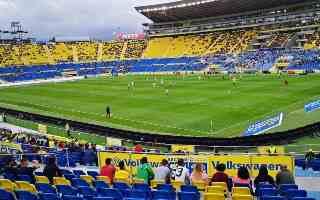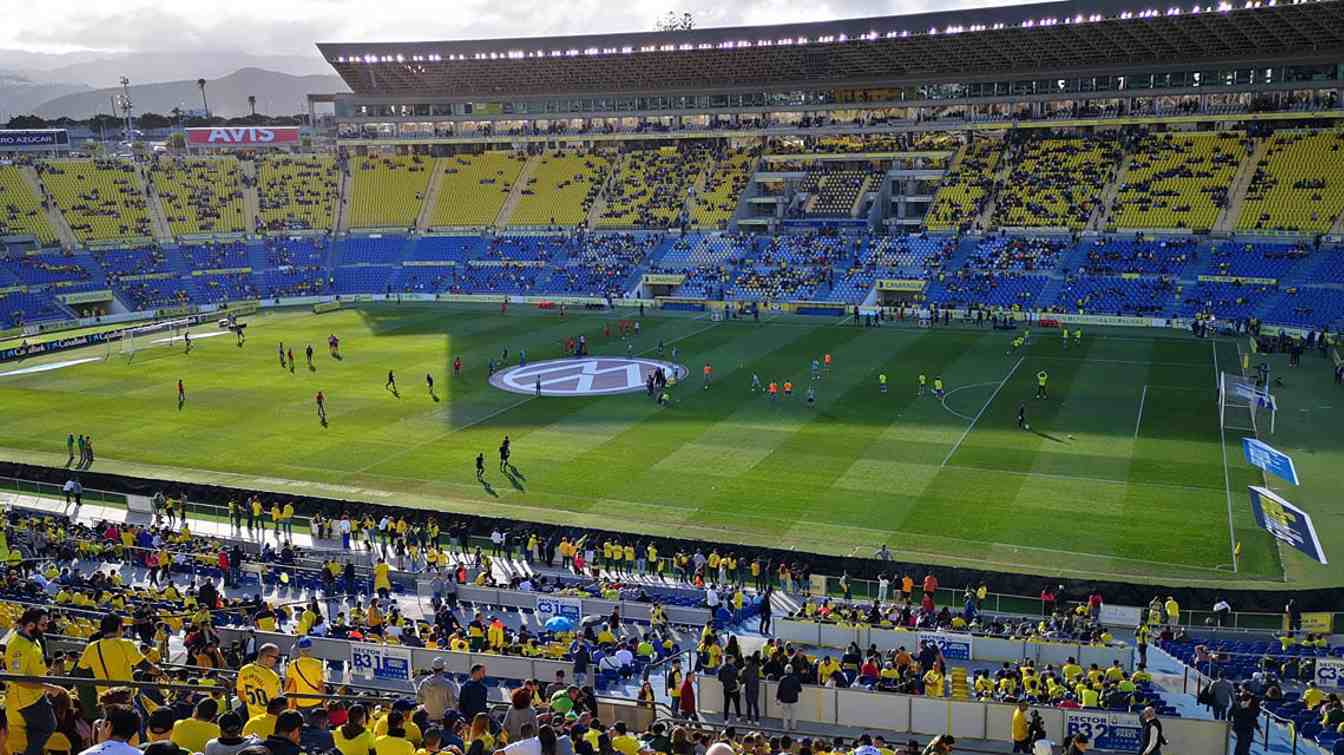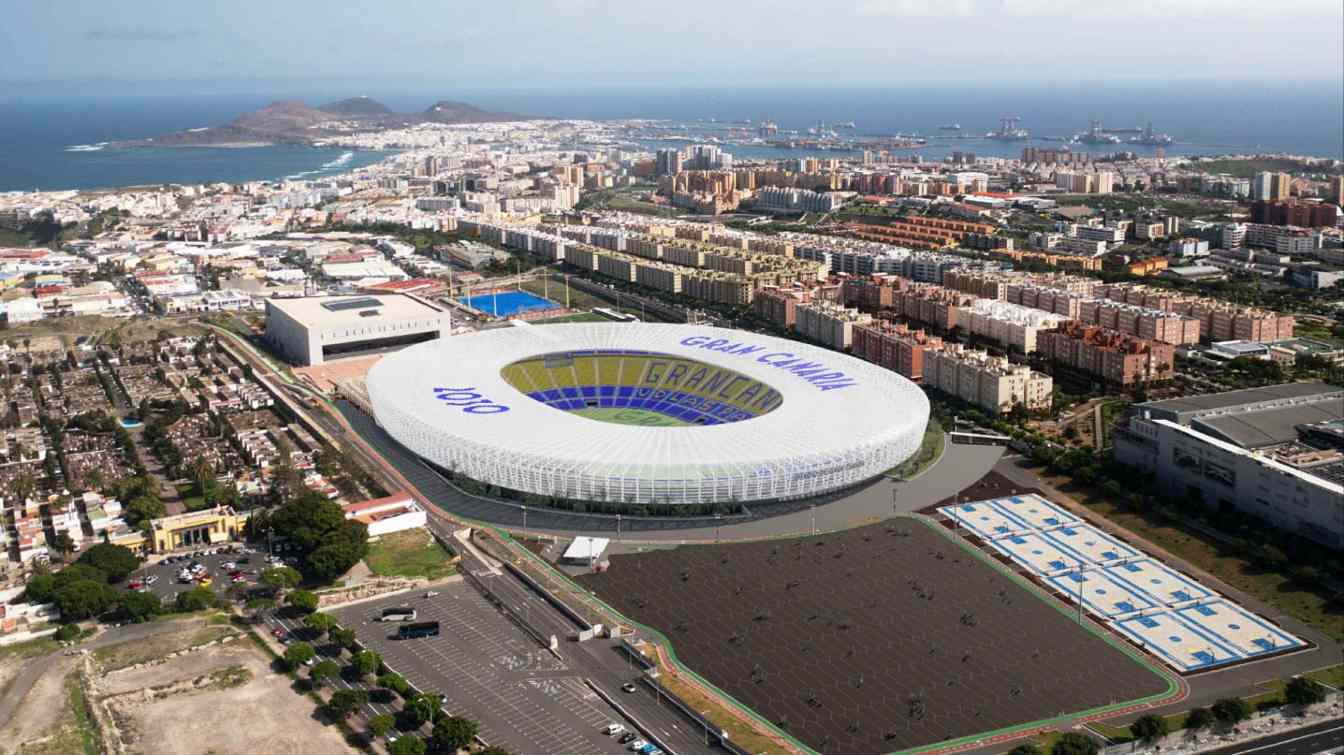WC 2030: Nine companies interested in modernizing Estadio Gran Canaria
source: StadiumDB.com; author: Paulina Skóra
 Through the Insular Sports Institute, the Cabildo will introduce recreational and commercial services to the stadium, ensuring financial stability and reclaiming “every last euro” of an investment exceeding €100 million.
Through the Insular Sports Institute, the Cabildo will introduce recreational and commercial services to the stadium, ensuring financial stability and reclaiming “every last euro” of an investment exceeding €100 million.
Advertisement
What will the modernization include?
Estadio Gran Canaria will host World Cup matches. First, however, extensive renovations are necessary, with the primary objective of increasing stadium capacity. The Cabildo will invest over €105 million for expansion and comprehensive upgrades, which will raise the current capacity to nearly 45,000.
Unused infrastructure, such as the east tower and annex, will be demolished, and improvements to crowd flow, evacuation, and security plans will be implemented. Additionally, the entire perimeter of the stands will be covered, VIP amenities will be enhanced, the pitch level lowered, and goals repositioned closer to the Naciente and Curva stands. Work is scheduled to begin in 2025 and finish by 2027.
A development opportunity for the entire region
The proposed use of World Cup experience and Estadio Gran Canaria upgrades is expected to exceed basic improvements. Aridany Romero, island councilor and president of the Insular Sports Institute, along with director Leticia López and head of the Architecture Department, Ricardo Pérez de los Cobos, recently attended the Summit Stadiums conference in Madrid. Successful cases of stadium and arena construction from around the world were presented, addressing topics like technology supporting financial stability, creating calm, comfortable spaces without imposing structures for fan accommodation, and of course, energy efficiency,
explained Romero.
The plan is for the facility not only to host UD Las Palmas matches every two weeks but also to offer a variety of activities that will make it an iconic venue on the island, attracting tourists, boosting the economy, and generating jobs through the services it will offer,
highlighted the sports minister. The intention is to replicate models from other Spanish venues, such as the Santiago Bernabéu and Reale Arena, which provide year-round access to gyms, entertainment centers, restaurants, cafes, shops, and other leisure spaces regardless of match schedules.
Nine companies interested in modernization
Besides connecting with construction companies and architectural firms, the Summit Stadiums provided an opportunity for the island delegation to showcase the Cabildo's work on the Estadio Gran Canaria project.
A few days ago, the Insular Sports Institute announced the nine companies progressing to the second stage of the project’s design competition: Compromiso UTE VRB Estadio de Gran Canaria 2030; Estudio Lamela S.L.P; Idom Consulting Engineering Architecture S.A.U.; Compromiso UTE Nexo Junquera Socotec Estadio; Ayesa Ingeniería y Arquitectura; Ezketa S.L.P; Proes Consultores y Populous; L35 Arquitectura, Urbanismo y Diseño; and Compromiso UTE Morph Typsa.
Reputable brands are on the list. For example, Spanish firm IDOM designed San Mamés and the new Camp Nou. American studio Populous boasts a portfolio that includes Wembley and Tottenham Hotspur Stadium, among others. L35, on the other hand, co-designed the Santiago Bernabéu and Estudio Lamela was responsible for the 1992-1994 redevelopment of the Merengue Temple and prepared the Son Moix project.
FIFA commendation
Fernando Sanz, a member of the organizing committee for the 2030 World Cup hosted jointly by Spain, Portugal, and Morocco, once again publicly congratulated the Gran Canaria authorities, emphasizing the technical work carried out and noting that a visit from FIFA representatives confirmed all elements presented in the candidacy documentation.
Advertisement

 StadiumDB
StadiumDB ©
© 